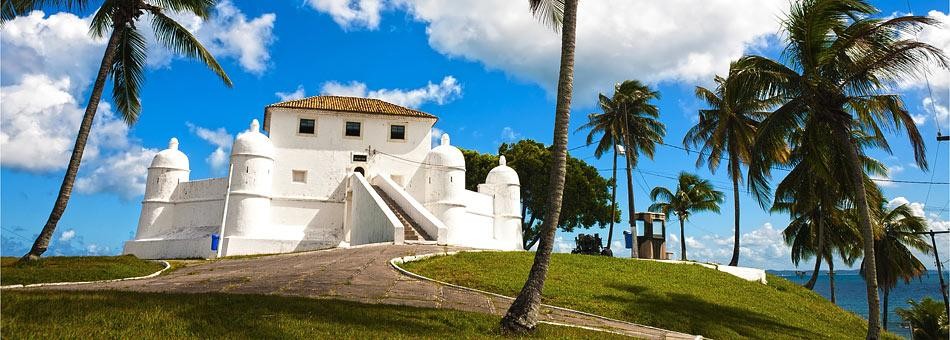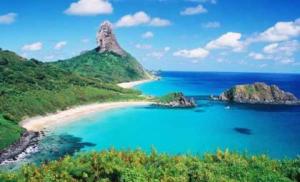Fernando de Noronha is an archipelago of 21 islands and islets in the Atlantic Ocean, 354 km (220 mi) offshore from the Brazilian coast. The main island has an area of 18.4 square kilometres (7.1 sq mi) and had a population of 3,012 in the year 2010. The area is a special municipality (distrito estadual) of the Brazilian state of Pernambuco (despite being closer to the state of Rio Grande do Norte) and is also a Unesco World Heritage Site. Its timezone is UTC-02:00. The local population and travellers can get to Noronha by plane or cruise from Recife (545 km) or by plane from Natal (360 km). A small environmental preservation fee is charged from tourists upon arrival by Ibama (Institute of Environment and Renewable Natural Resources).
The islands of this archipelago are the visible parts of a range of submerged mountains. Consisting of 21 islands, islets and rocks of volcanic origin, the main island has an area of 18 km² (7.1 miles²), being 10 km (6.2 mi) long and 3.5 kilometres (2.170 mi) wide at its maximum. The base of this enormous volcanic formation is 756 m below the surface. The main island, from which the group gets its name, makes up 91% of the total area; the islands of Rata, Sela Gineta, Cabeluda and São Jose, together with the islets of Leão and Viúva make up the rest. The central upland of the main island is called the Quixaba.
The island was covered in forest until the 19th century, when it was cleared to prevent prisoners on the island from building rafts. The islands are now predominantly covered by shrubs, with some areas of recently planted secondary forest. Many of the plants on the island today were introduced by people.
The United Nations Environment Programme lists 15 possible endemic plant species, including species of the genera Capparis, (2 species) Ceratosanthes (3 species), Cayaponias (2 species), Moriordica, Cereus, Palicourea, Guettarda, Bumelia, Physalis, and Ficus noronhae. Combretum rupicola is also a likely endemic.
The islands have two endemic birds — the Noronha Elaenia (Elaenia ridleyana) and the Noronha Vireo (Vireo gracilirostris). Both are present on the main island; Noronha Vireo is also present on Ilha Rata. In addition there is an endemic race of Eared Dove Zenaida auriculata noronha. An endemic sigmodontine rodent,Noronhomys vespuccii, mentioned by Amerigo Vespucci, is now extinct. The islands have two endemic reptiles, Amphisbaena ridleyi and Trachylepis atlantica.
The life above and below sea is the main attraction of the island. Sea tortoises, dolphins, albatrosses and many other species are frequently observed.
The climate is tropical, with two well-defined seasons. The rainy season lasts from March to August, the rest of the year sees little rain.
Read more at Wikipedia Fernando de Noronha

